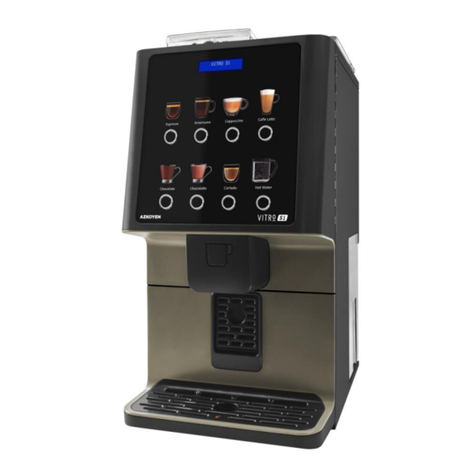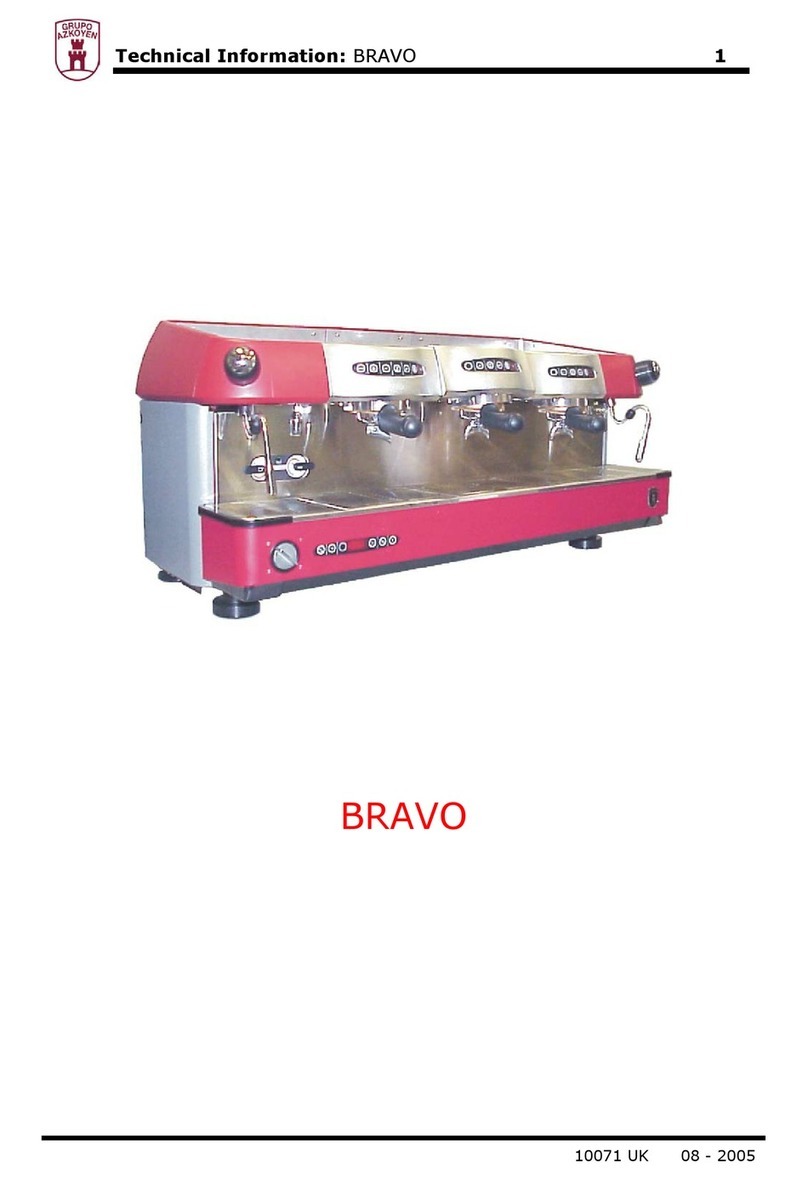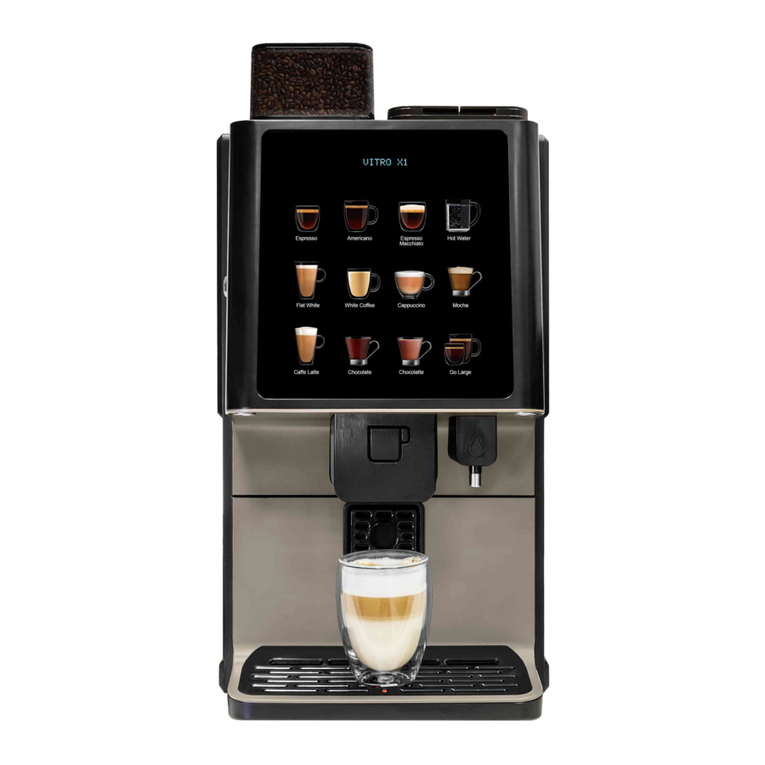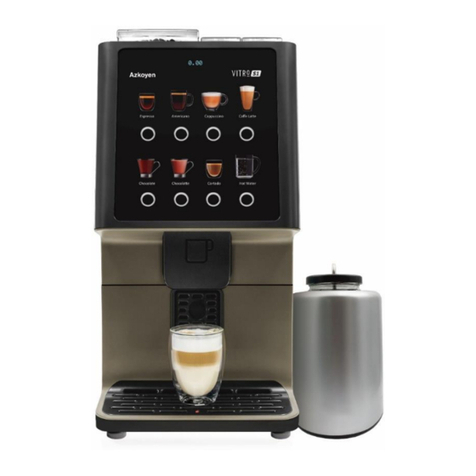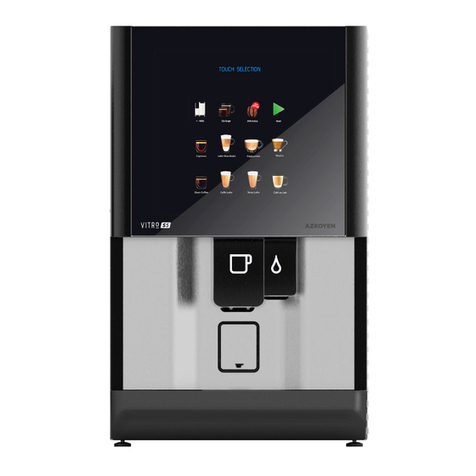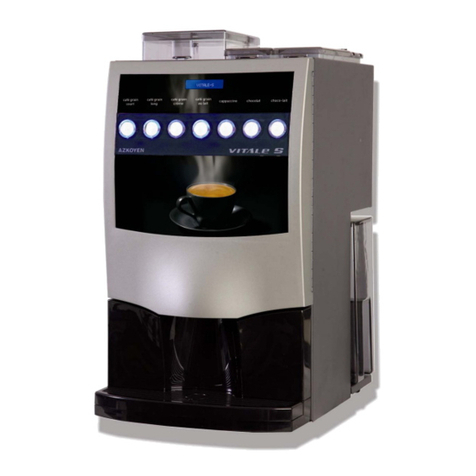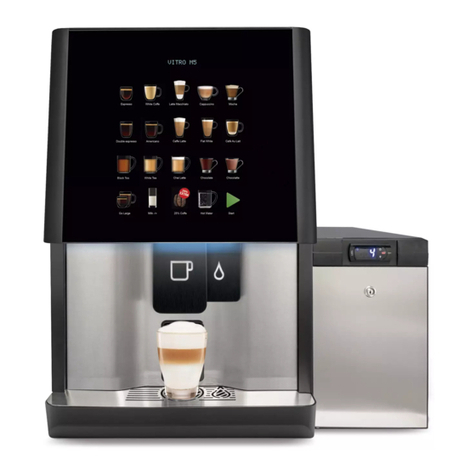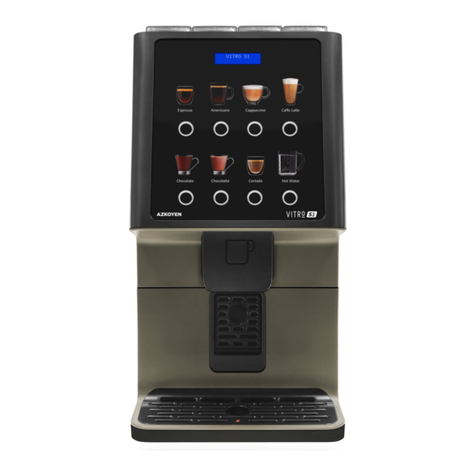User Manual
- 4 -
WARNINGS
General
READ THIS MANUAL CAREFULLY BEFORE USING THE DISTRIBUTOR.
This distributor has been designed and built in accordance with current safety standards.
AZKOYEN guarantees that these machines comply with the following directives:
oEC low voltage directive DBT 2006/95/CEE and modifications.
oEC electromagnetic compatibility directive EMC 2004/108/CEE and modifications.
These machines are designed for INDOOR USE ONLY.
They must not be fitted at locations in which they may be exposed to water jets and must not be cleaned
by this method.
This document contains information which is private property and is protected by laws on intellectual
property. All rights reserved. The photocopying, reproduction and translation into any language of any
part of this document is not permitted without the prior written consent of AZKOYEN.
AZKOYEN accepts absolutely no responsibility for damage caused to persons or property as a result of:
oIncorrect installation
oUnsuitable electric and/or hydraulic installation
oIncorrect cleaning or maintenance
oIncorrect use of the machine
oThe use of non-original replacement parts and unauthorised modifications
AZKOYEN reserves the right to apply improvements arising as a result of its constant research to the
present model without prior notice.
This manual is an integral part of the machine and, as such, must always be kept inside it so that it may
be consulted at any time.
This appliance is not designed to be used by persons (including children) with reduced physical, sensory
or mental capabilities, lack of experience or knowledge, unless they are supervised or have been
instructed in its use by somebody responsible for their safety. Children should be supervised to ensure
that they do not play with the appliance. Section 7.12 of EN60335
Maintenance
The user or the person responsible for reloading and cleaning the appliance must follow the instructions
indicated in this manual.
When reloading, only use ready-prepared products specific to this type of machine. Do not touch the
product with your hands and prevent liquid from falling inside the product hoppers.
The components do not require tools for dismantling and must only be handled by qualified technical staff.
Prevent water from freezing inside the machine. Empty the boiler when maintenance work is to be
performed or when the machine is going to be disconnected for a long period of time.
Given the characteristics of some food products, these may lead to incorrect operation of the machine if
used beyond the parameters of temperature and relative humidity recommended in this manual.
If it is necessary to move the machine avoid:
oTipping the machine
oDragging or lifting it with some kind of pulling system (rope, straps, etc.).
oShaking or striking the machine, no matter whether it is in protective wrapping or not.
The machine must be installed at locations which comply with the recommendations of temperature,
electricity and water installation, weights, etc. given in this manual and must be performed by qualified
personnel..

